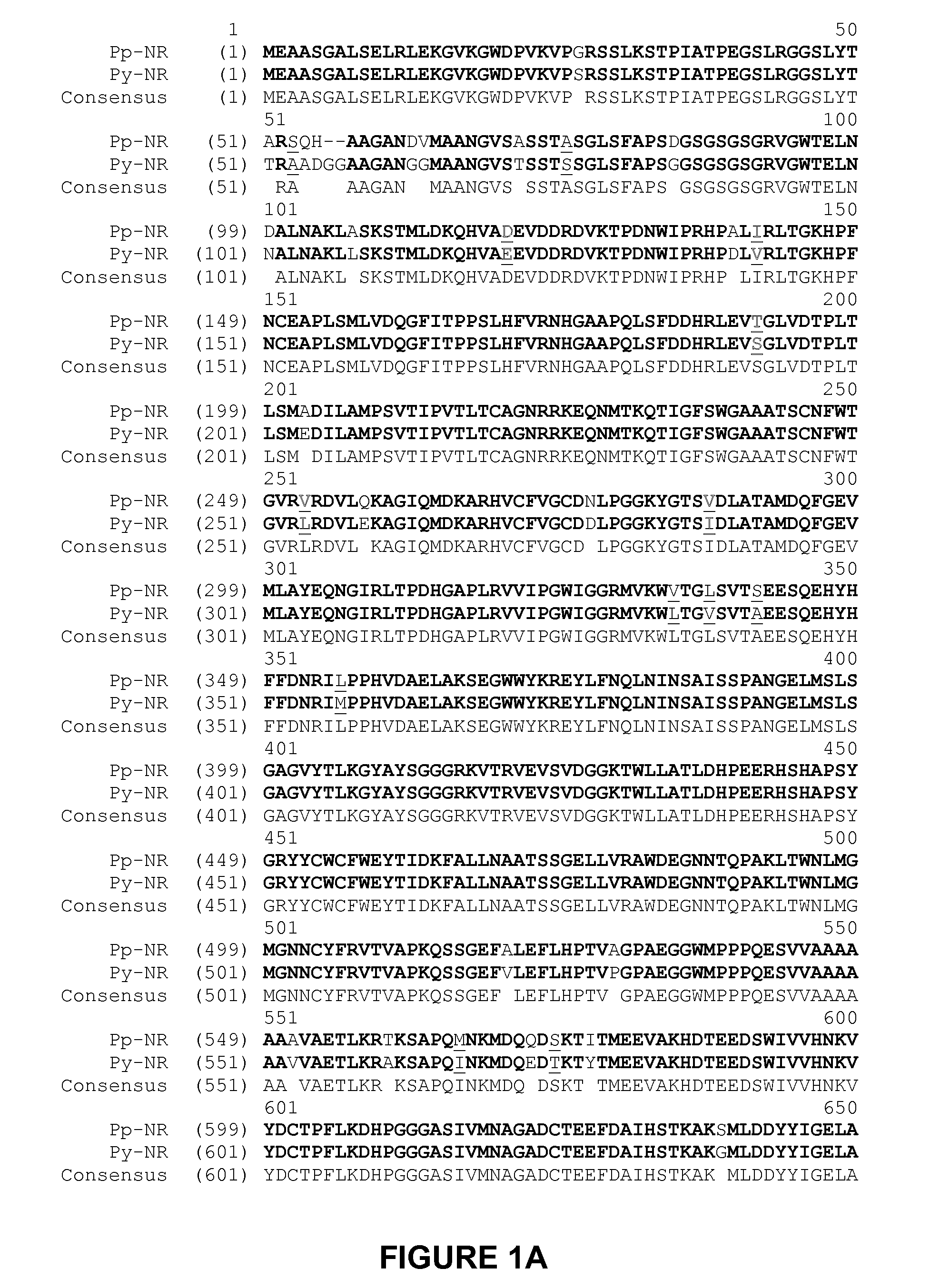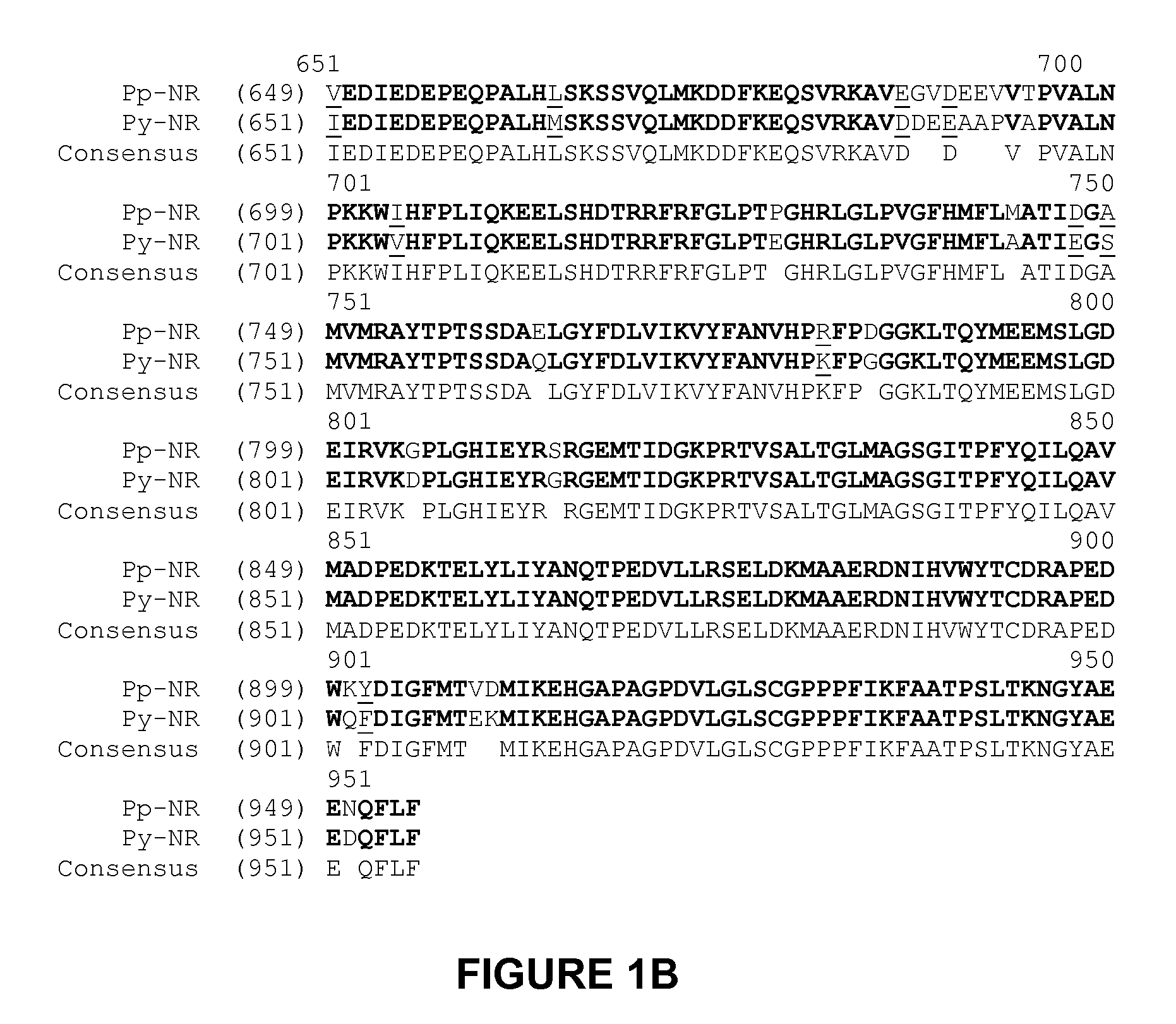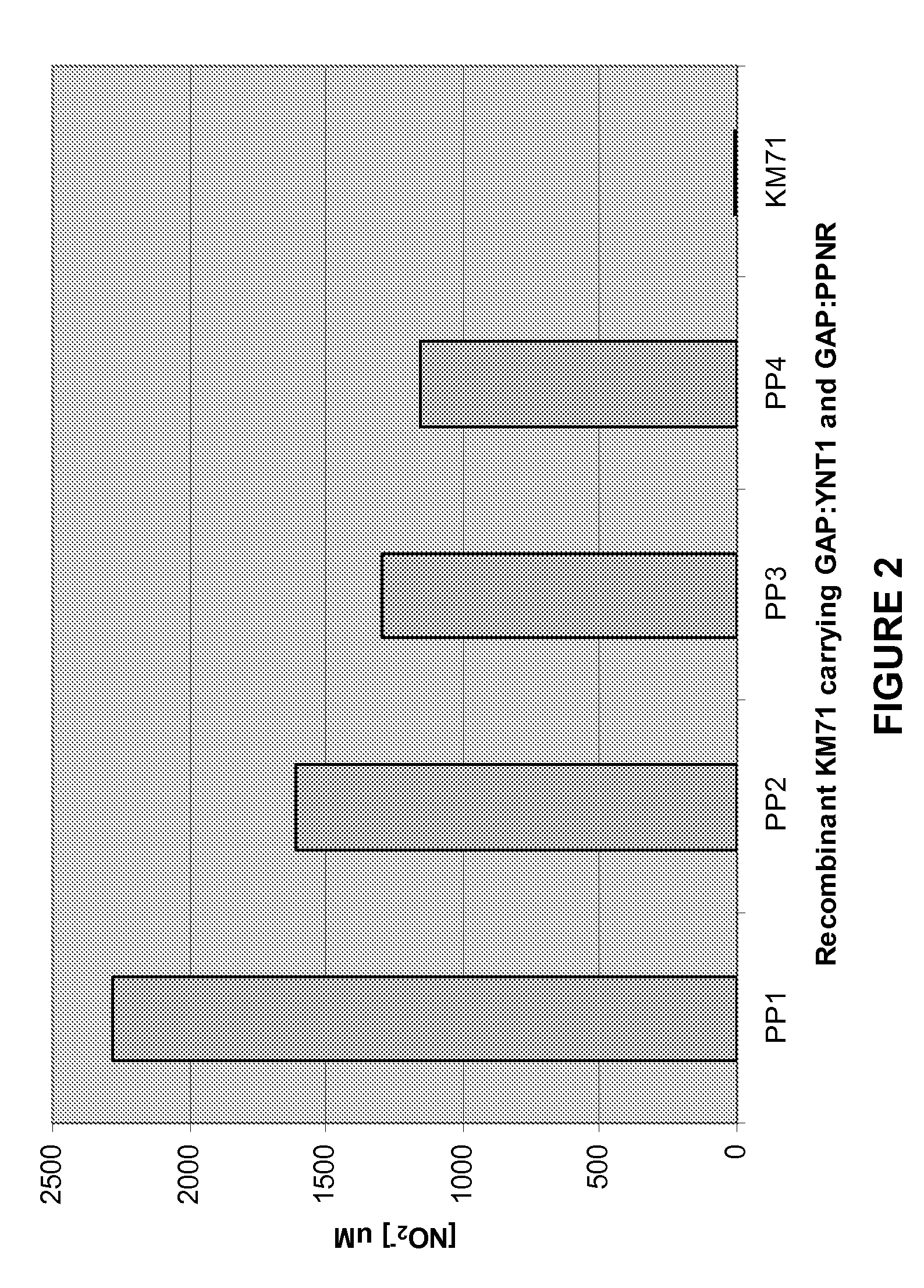Nitrate reductases from red algae, compositions and methods of use thereof
a technology of nitrate reductases and red algae, applied in the field of nitrate reductases from red algae, compositions and methods of use thereof, can solve the problems of reduced environmental impact of nitrogen fertilizer manufacturing and agricultural use, use and dependence, and on-farm input costs, so as to reduce the level and/or activity of nr polypeptides, the effect of reducing or eliminating the level of nr polypeptides in plants
- Summary
- Abstract
- Description
- Claims
- Application Information
AI Technical Summary
Benefits of technology
Problems solved by technology
Method used
Image
Examples
example 1
Isolation of NR Sequences
[0239]20,778 Porphyra yezoensis ESTs were identified in Genbank then downloaded. The dataset was converted to fasta, formatted for BLAST algorithm searching, and searched with maize nitrate reductase as the query.
[0240]Multiple ESTs likely encoding fragments of nitrate reductase genes were identified, and EST contigs were built, supplemented by 5′- and 3′-directional EST walking and final contig assembly of the gene transcript region. Prior to this contig assembly the gene and its coding region existed in the public databases as short EST sequences representing merely fragments of the gene. The resulting Porphyra yezoensis nitrate reductase transcript contig represented a 5′UTR, the N-terminus, and all but the last (C-terminal) 167 codons of the peptide.
[0241]Assuming the two strains of Porphyra were closely related organisms, oligonucleotide primers were designed from the assembled Porphyra yezoensis nitrate reductase gene with sense: attgtggtgcacaacaaggtgt...
example 2
Pichia Pastoris Expression Vectors and Yeast Transformation
[0244]Pichia pastoris is a non-nitrate assimilating yeast and requires both functional nitrate transporter and nitrate reductase to uptake nitrate (Unkles, et al., (2004) J. Biol. Chem. 279:28182-28186). P. pastoris has been used as a model system for identification and characterization of nitrate reductases and / or plant nitrate transporters. The nitrate reductase activity can be determined in vitro or in vivo when a nitrate transporter gene was co-expressed. The wild type nitrate reductase genes from Porphyra performa (PpNR) and Porphyra yezoensis (PyNR) driven by a yeast constitutive promoter (GAP promoter, glyceraldehydes-3-phosphate dehydrogenase) was integrated into AOX1 locus of P. pastoris stain KM71 carrying a yeast nitrate transporter gene (YNT1).
[0245]Details: YNT1 (nitrate transporter from Pichia angusta) driven by GAP promoter (vector: p3.5GAP-YNT1) was integrated into P. pastoris strain KM71 genome at His4 locus...
example 3
PpNR and PyNR Mutants
[0248]To maintain high level of active form of PPNR in transgenic plants, the serine residue in a putative phosphorylation motif R / K-S / T-X-pS-X-P (J. of Experimental Botany (2004) 55:1275-1282) at position 561 will be mutated to either alanine (S561A mutant, sequence provided) or aspartic acid (S561D mutant). The mutated PPNRs will be generated in P. pastoris and tested in YNT1-carrying line for NR activity as described before. The functional S561A or S561 D will be expressed in transgenic plants driven by a constitutive promoter or a mesophyll preferred promoter. The NR activity will be tested during light / dark transitions. Other putative post-translational regions such as N-terminal region of PPNR may be modified or deleted to de-regulate by light at post-translational level.
PUM
| Property | Measurement | Unit |
|---|---|---|
| Temperature | aaaaa | aaaaa |
| Temperature | aaaaa | aaaaa |
| Temperature | aaaaa | aaaaa |
Abstract
Description
Claims
Application Information
 Login to View More
Login to View More - R&D
- Intellectual Property
- Life Sciences
- Materials
- Tech Scout
- Unparalleled Data Quality
- Higher Quality Content
- 60% Fewer Hallucinations
Browse by: Latest US Patents, China's latest patents, Technical Efficacy Thesaurus, Application Domain, Technology Topic, Popular Technical Reports.
© 2025 PatSnap. All rights reserved.Legal|Privacy policy|Modern Slavery Act Transparency Statement|Sitemap|About US| Contact US: help@patsnap.com



